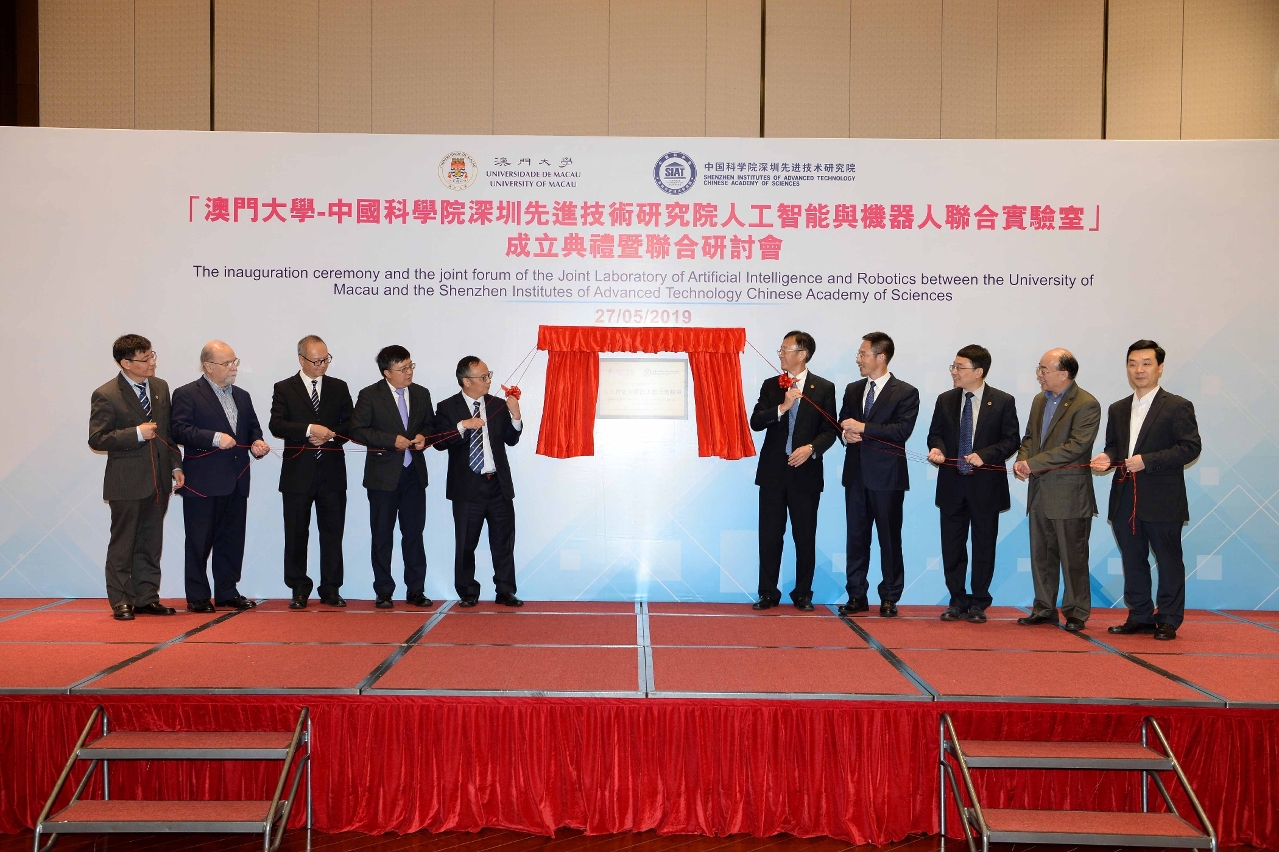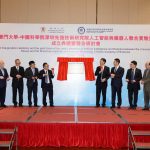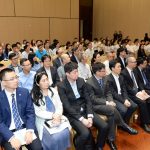 The Joint Laboratory of Artificial Intelligence and Robotics
The Joint Laboratory of Artificial Intelligence and Robotics
The University of Macau (UM) today (27 May) held an inauguration ceremony for the Joint Laboratory of Artificial Intelligence and Robotics between UM and the Shenzhen Institutes of Advanced Technology (SIAT) of the Chinese Academy of Sciences (CAS), which was followed by a joint forum. The lab aims to provide a platform for collaborative research in artificial intelligence and robotics and is expected to enhance the research capacity of both sides.
Yonghua Song, rector of UM; and Fan Jianping, president of the CAS Shenzhen Institutes of Advanced Technology, signed a collaboration agreement and another agreement on joint PhD training programmes. According to Song, the establishment of the joint lab will have a long-lasting impact on UM. Through the lab, UM not only can learn from the SIAT in personnel training, the development of research teams, and the commercialisation of research results; it can also have access to an extensive network of institutions for collaboration and exchange. Fan expressed his hope that with the rapid development of the Guangdong-Hong Kong-Macao Greater Bay Area, both sides will combine their strengths, carry out close collaborations in artificial intelligence, robotics, biomedical sciences, and other areas, and plan together in personnel training and student training.
After the ceremony, both parties attended the forum and presented their latest research findings. Xu Chengzhong, dean of UM’s Faculty of Science and Technology (FST), discussed UM’s research results in artificial intelligence and robotics. FST professor Zhou Jiantao and representatives of the SIAT also gave presentations on related topics.




